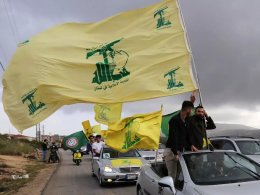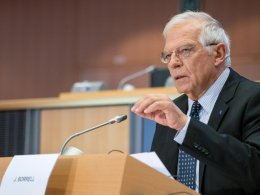In a discovery by Iranian google map users, the name of Tehran's longest and most prominent avenue, Valiasr, has reverted to its previous name "Pahlavi," named for the former Iranian monarch.
The user-initiated change, which sparked interest and notice by Iranian users, came as a surprise to many as protesters in Iran are currently marching against the Islamic Republic and tearing down street signs created by the regime.
In August 2015, the name of Valiasr street, which runs 18 kilometers from the south of the capital of Tehran to the north, reverted to Pahlavi for a short time, prompting the Islamic-state broadcaster IRIB to report the incident and label it "Google's mischief."
Not only have street names been changed to their pre-revolution labels , but buildings like the Vozara hotel-apartment in Tehran's Vozara Street, now shows as Mahsa Amini Hotel Apartment.
Some speculate that the hotel apartment's name was changed, given that it was at the morality police headquarters on Vozara Atreet, where the 22-year-old had a stroke caused by alleged blows to her head while in custody. On social media, many have called to rename the street after Amini.
However, Google might have nothing to do with the change, which Iranian supporters of the former monarchy in Iran and abroad have hugely welcomed.
While individual users cannot change the names of the city, town, village, and streets on the maps, names can be altered using Google's feedback feature of the maps if enough users report them as incorrect and suggest alternatives.
For many Iranians opposed to the regime, apps like Google maps and others have become a new arena to combat the Islamic Republic, demanding regime change and that companies and governments support regime change.
Valiasr Street is considered the longest in the Middle East region, going through several names since its completion in 1933 after being built for 11 years. The road was originally called Pahlavi Avenue, after the Iranian Shah Reza Pahlavi, the founder of the Pahlavi dynasty and father to the late Shah of Iran, Mohammad Reza Pahlavi.
Following the Islamic Revolution of 1979, many roads, towns, cities, and streets were renamed under the new regime, which sought to erase any memory of the Iranian monarch.
At first, many streets were named after former Iranian prime minister Mohammad Mosaddeq but later changed by the ayatollahs who purged the new Islamic government of the late Iranian Prime Minister's supporters.
Several years after the Islamic revolution of 1979, the Islamic Republic named the roads after historical and contemporary Islamic figures. With protests ongoing since September, Iranian protesters have torn down signs like Palestine Street and (Islamic) Revolution Street while calling for the government's overthrow.
In response to the protests, the Islamic Republic has accused the protests of being supported by foreign forces and has ordered security forces to engage in brutal crackdowns.
Despite facing arrests and being killed on the streets, protesters in Iran continue to denounce the mullahs in Iran and destroy signs, posters, and labels honoring the Islamic regime.










